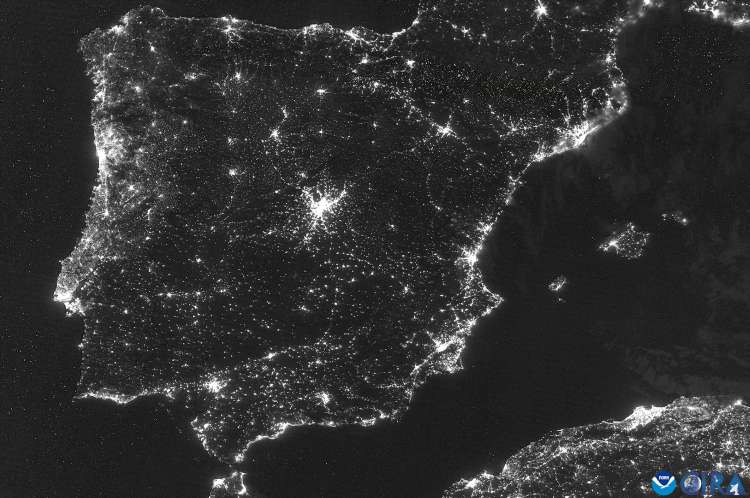
Threats to energy security: In April 2025, Spain experienced one of the most severe blackouts in recent memory. Triggered by a technical fault on a high-voltage transmission line during peak demand and low renewable output, the incident left more than five million people without electricity for several hours. Reports from the Council of Ministers of Spain, the International Energy Agency, and the European Network of Transmission System Operators for Electricity detailed the causes.
A sudden drop in wind generation, linked to a shift in weather patterns, coincided with a fault in a key inter-regional transmission corridor. The resulting instability led to a cascading failure across the grid. Emergency reserves and manual interventions eventually restored power.
The blackout revealed weaknesses in Spain’s energy security.
Energy security is a cornerstone of national stability, economic growth and environmental sustainability. According to the United Nations, it means “the continuous availability of energy in varied forms, in sufficient quantities and at affordable prices“.
READ I Compressed biogas is India’s most undervalued sustainability opportunity
Understanding the Four A’s
In an increasingly interconnected and energy-dependent world, ensuring that energy is available, accessible, affordable, and acceptable has become a critical challenge for policymakers, industry and citizens.
Known as the “Four A’s” of energy security, these criteria — defined by the International Energy Association — provide a framework for evaluating and improving energy systems.
Availability refers to the physical supply of energy needed to meet demand, including both domestic production and imports. Factors influencing availability include geopolitical stability in supplier countries, investment in exploration and infrastructure, and the reliability of renewable energy output. Solutions include scaling up renewable energy, expanding energy storage, and diversifying sources.
Accessibility concerns the infrastructure needed to deliver energy to consumers — grids, pipelines and distribution systems. Key vulnerabilities include ageing networks, urban-rural divides in energy access, and exposure to cyber or physical threats. Boosting local energy generation and decentralised production could improve resilience.
Acceptability addresses the social and environmental impact of energy systems. This includes carbon emissions, pollution, public acceptance, and compliance with environmental standards. Education, transparency and community engagement are key to building trust in new energy projects.
Affordability is central to energy security. It ensures that energy costs remain manageable for households, businesses and governments. Price fluctuations, subsidies, taxation and global commodity markets all play a role. Balancing affordability with sustainability often requires targeted public policies.
The blackout revealed weaknesses in three areas. In availability, the reliance on intermittent renewables without adequate storage created vulnerabilities. In accessibility, the grid lacked sufficient redundancy to reroute power effectively. In acceptability, public trust was shaken by perceived overreliance on variable energy without robust contingency planning.
Renewables and energy security
Renewable energy sources are central to the global energy transition. They reduce dependence on imported fossil fuels and allow countries to tap into domestic, low-carbon resources. Renewables also support long-term energy sovereignty and reduce exposure to geopolitical risks.
Environmentally, they cut greenhouse gas emissions and align with targets such as the Paris Agreement and the UN Sustainable Development Goals. While upfront investment is high, operating costs are typically low, which can help stabilise prices over time.
However, renewables bring challenges. Solar and wind output can be highly variable, and without sufficient storage or complementary generation sources such as hydropower, natural gas or nuclear, energy systems may struggle to maintain reliability.
Integrating renewables requires smart grids, battery storage, demand management systems, and modernised infrastructure. Many countries are only beginning to adapt, creating a transitional period marked by technical, regulatory and social challenges.
The UN’s engineering push for net-zero
Launched in September 2021, the Council of Engineers for the Energy Transition (CEET) operates under the auspices of the United Nations Secretary-General. It brings together global experts to advise on engineering solutions for achieving net-zero emissions by 2050.
CEET’s work focuses on scaling up clean technologies, supporting countries in implementing their Nationally Determined Contributions (NDCs), publishing guidance on breakthrough solutions, and producing technical analyses of sectoral pathways. Its aim is to provide globally informed, locally relevant advice on how to navigate the engineering challenges of the transition.
The Council’s reports have highlighted major barriers to scaling clean energy — including insufficient financing, skills gaps, fragmented regulation, and the absence of common technical standards across countries.
Building a secure, sustainable future
Energy security is evolving. The Four A’s — availability, accessibility, affordability and acceptability — still define the landscape, but must now be interpreted through the lens of climate goals and technological change.
The Spanish blackout underscores the need for investment in grid modernisation, storage systems and risk preparedness. While renewable energy enhances environmental acceptability and long-term availability, poorly planned integration can expose short-term vulnerabilities.
To meet the challenges ahead, governments will need to mobilise public and private investment, modernise regulations, and strengthen cross-border cooperation. At the same time, public engagement and equitable access must remain at the heart of energy policy.
With the right balance of technical innovation, community buy-in, and strategic foresight, it is possible to build an energy-secure future that meets the needs of both people and the planet.
Nicolaos Theodossiou is professor at the Department of Civil Engineering of the Aristotle University of Thessaloniki, Greece. He chairs the United Nations’ Sustainable Development Solutions Network SDSN Black Sea. Dr Phoebe Koundouri, a Professor at the Athens University of Economics and Business and University of Cambridge, contributed to this article. She is the President of the World Council of Environmental and Natural Resource Economists Associations, Chair of the SDSN Global Climate Hub, Director of AE4RIA, and Director of the Sustainable Development Unit at ATHENA Research Center. This article was originally published under Creative Commons by 360info .
.
